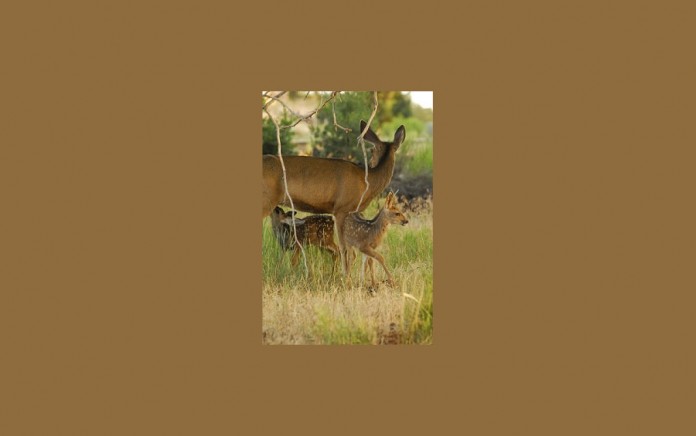Reminder comes as public turns in several ‘abandoned’ deer fawns
PHOENIX — Within the past several weeks, well-intentioned people have delivered several deer fawns to Arizona Game and Fish Department (AZGFD) offices believing that the animals were abandoned by their parents.
While the department understands the public’s desire to help, in reality they’re often taking a newborn or juvenile animal from its parents, which likely “parked” the baby in one location while they foraged for food and water for long periods of time. If the fawn appears alert and healthy it is best to leave the animal alone and to walk away.
“Picking up or ‘rescuing’ baby wildlife unnecessarily and most often leaves the animal an orphan,” said Mike Demlong, Arizona Game and Fish Department Wildlife Education program manager. “The mother is often left searching for her young and baby wildlife raised by humans are less likely to survive when they are released back into the wild. Deer fawns and elk calves cannot be returned to the wild.”
AZGFD reminds those who come across young or baby wildlife to leave them alone. Some species of baby animals, such as elk calves or deer fawns may be euthanized because they cannot be released back into the wild due to disease concerns and the fact that zoos and sanctuaries have limited space to hold them.
Fortunately, AZGFD was able to recently place five deer fawns that were recently picked up, but that is not usually the case.
The department’s Wildlife Center and others around the state are inundated every year with baby birds, rabbits and other wildlife that were unnecessarily taken from the wild.
The public should contact a licensed wildlife rehabilitator or their nearest AZGFD office if they encounter an animal that is clearly sick or injured with wounds or broken bones; is unresponsive or lethargic; has been attacked by a cat or dog; or there is strong evidence that the mother is dead.
Young wildlife found in your yard or in the field is rarely abandoned. Typically, once the perceived predator (you, or your cat or dog) leaves the area, one or both parents will return and continue to care for the young.
Baby birds are the most common wildlife species encountered by the public and removed from the wild. Young birds that have fallen from the nest can be placed back in the nest or as close as possible, preferably in an artificial nest. Those birds that are partially flighted should be left alone or in some cases moved nearby out of harm’s way.
Contrary to popular belief, human scent will not prevent the parents from returning to care for their young. Eggs of ground-nesting birds like quail should be left in place when discovered.
“It’s reassuring to know our society values wildlife and is passionate about caring for wild animals,” Demlong said. “But, people need to do what is best for the baby wildlife and often that is to just leave them alone even if it’s difficult to accept.”
If you have questions about a specific situation, please contact one of the wildlife rehabilitators listed on the department’s website at: www.azgfd.gov/urbanwildlife or contact your local Game and Fish office.





